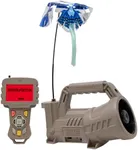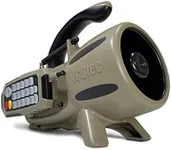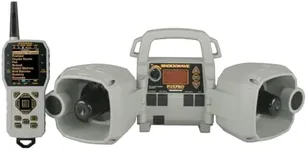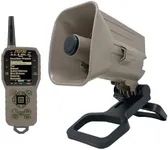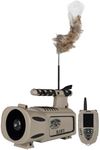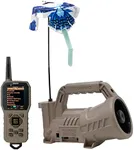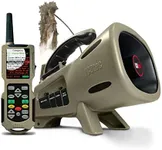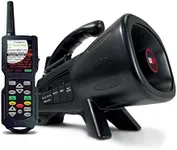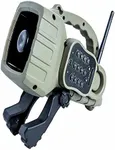Buying Guide for the Best Coyote Calls
Choosing the right coyote call can significantly enhance your hunting experience. The right call can attract coyotes effectively, making your hunt more successful. When selecting a coyote call, it's important to consider various specifications to ensure you pick the one that best suits your needs and hunting style. Here are some key specifications to consider and how to navigate them.Type of CallCoyote calls come in two main types: mouth calls and electronic calls. Mouth calls require you to blow into them to produce sound, giving you more control over the call's tone and volume. They are lightweight and don't require batteries, but they can be challenging to master. Electronic calls, on the other hand, use pre-recorded sounds and are easier to use, especially for beginners. They often come with remote controls and a variety of sounds, but they require batteries and can be heavier. Choose a mouth call if you prefer a more hands-on approach and don't mind the learning curve. Opt for an electronic call if you want convenience and a variety of sounds without much effort.
Sound VarietyThe variety of sounds a coyote call can produce is crucial for attracting coyotes in different situations. Some calls offer a limited range of sounds, while others provide a wide array of distress calls, howls, and barks. A call with more sound options can be more versatile and effective in different hunting scenarios. If you are a beginner, start with a call that offers a few basic sounds. As you gain experience, you might want to invest in a call with a broader range of sounds to adapt to various hunting conditions and coyote behaviors.
Volume ControlVolume control is important because it allows you to adjust the loudness of the call to suit different environments and distances. Some calls have fixed volumes, while others offer adjustable volume settings. Adjustable volume is beneficial because it lets you start with a lower volume to avoid scaring off nearby coyotes and gradually increase it to reach those farther away. If you hunt in diverse terrains, look for a call with adjustable volume to give you more flexibility in your calling strategy.
DurabilityDurability is a key factor, especially if you hunt in harsh weather conditions or rugged terrains. A durable coyote call will withstand drops, moisture, and extreme temperatures, ensuring it lasts longer. Look for calls made from high-quality materials like sturdy plastics or metals. If you often hunt in challenging environments, prioritize durability to ensure your call remains functional and reliable throughout your hunting trips.
Ease of UseEase of use is particularly important for beginners. Some coyote calls are straightforward and user-friendly, while others require more skill and practice. Electronic calls are generally easier to use because they come with pre-recorded sounds and often include remote controls. Mouth calls, while offering more control, can be harder to master. If you are new to coyote hunting, consider starting with an electronic call for its simplicity. As you become more experienced, you might want to try mouth calls to gain more control over your calling techniques.
Battery LifeFor electronic coyote calls, battery life is a critical consideration. A call with a long battery life ensures you won't run out of power during a hunt. Some calls use standard batteries, while others have rechargeable batteries. If you plan on long hunting trips, look for a call with extended battery life or the option to use rechargeable batteries. This will save you from the inconvenience of frequent battery changes and ensure your call is always ready when you need it.
